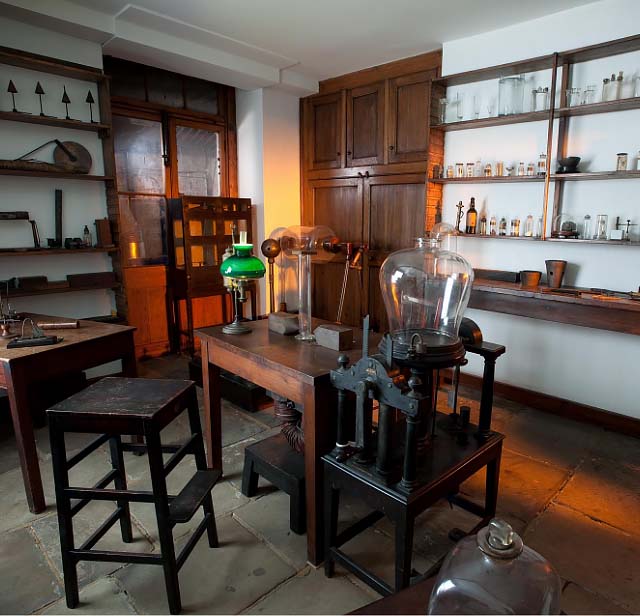The Faraday Museum
The 200-year-old plus organisation worthily dedicated to educating the general public about the latest scientific developments.
With an illustrious history and 14 Nobel Prize winners to its name, the Royal Institute has a lot to shout about and it does so with some panache. The museum trumpets some of the scientific greats who have worked in this building, including Humphry Davy (he of the miner's lamp), James Dewar (he of the flask) and the museum's namesake, Michael Faraday, the London bookbinder turned experimental scientist whose discovery of electromagnetic induction helped shape the modern world.
The lower ground floor displays are focused on experimentation and include iconic original apparatus used by Faraday et al. This is the place to see William Crooke's cathode ray tube, the gauze covered lamp with which Davy revolutionized safety in British mines, prototype Dewar flasks as well as Faraday's first ever sample of benzene.
Faraday's original dark, wooden shelved laboratory is still in situ but is now accompanied by a gleaming white 21st century nano-technology lab, where visitors can observe Faraday's modern counterparts at work, or perhaps just having a coffee break.
For a bit of interactive fun, have a go testing your reflexes against the 'Chemical Elements Song' and spot the 10 elements that were discovered at the Royal Institution. Of course, it's no good making lots of whizzy scientific discoveries if you can't tell everyone what you've done, and at the heart of the Royal Institution's dedication to communicating science is its horseshoe-shaped Lecture Theatre.
This is the scene of the RI's Friday Night Discourses and its equally celebrated Christmas Lectures, started by Faraday in 1825. So popular were these lectures that Albemarle Street became London's first one-way street to cope with the sheer weight of carriage traffic.
Other historic rooms on the first floor continue the communication theme with a well-stocked library and book-lined 'lecturer's corridor' accessorised with original props — from the stuffed toy kangaroo used in George Porter's lecture on Mechanics to the saw which illustrated Charles Taylor's lecture on Music.
Portraits of Royal Institute alumni and paintings of historic lectures adorn the walls alongside more light-hearted images such as James Gillray's cartoon of an experiment with laughing gas. Combining civilized opening hours, a convivial Wi-Fi enabled in-house café and its popular lecture programmes and deft displays, the RI has really stepped up to the mark on its mission to enlighten us about science.
When London's bigger museums are packed out with holiday crowds, savvy seekers after scientific knowledge might be well advised to follow in the footsteps of their Victorian forbears and head for Albemarle Street.

